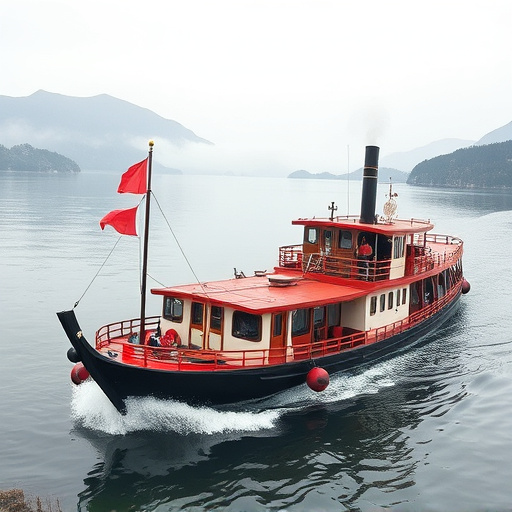A steam boat, or steamer, is a watercraft powered by steam engines, differentiating it from sail or motor boats. By burning coal or fuel, these vessels generate steam to drive paddle wheels or propellers, enabling faster travel than sailboats. This historical innovation revolutionized trade and commerce, facilitating efficient transportation of goods and passengers over long distances quickly. Steam boats, with their versatile propulsion systems, are ideal for leisure cruises, scenic tours, and long-distance voyages, offering a smooth and environmentally friendly way to navigate bodies of water.
- What is a Steam Boat?
- How Does a Steam Boat Work?
- Who Should Use and Is It Suitable for Long Journeys?
What is a Steam Boat?

A steam boat, also known as a steam ship or steamer, is a watercraft that uses steam power to generate propulsion. Unlike traditional boats that rely on sail or motor, steam boats harness the power of steam to drive their engines, making them unique and historically significant. The concept dates back to the 19th century when the need for faster and more efficient transportation on rivers and coastal routes became paramount.
These vessels are characterized by their large engines, typically powered by burning coal or other fuels, which produce steam to turn a paddle wheel or, in modern times, an advanced propeller system. The steam boat’s primary advantage lies in its ability to travel at greater speeds compared to sailboats, making it ideal for transporting goods and passengers over long distances in a relatively short time. This made them a game-changer in the transportation industry during their heyday, revolutionizing trade and commerce.
How Does a Steam Boat Work?

A steam boat operates by utilizing steam power to generate movement, marking a significant departure from traditional boats that rely on fossil fuels or sail power. At its core, a steam boat produces steam through boiling water, which then expands and exerts pressure on a piston or turbine, translating this mechanical energy into forward propulsion. This innovative approach not only powers the vessel but also allows for efficient control of speed and direction.
The process begins with the burning of fuel—typically coal, wood, or even modern alternatives—to heat water in a boiler. The heated water turns into steam, which is then channeled through pipes or valves to drive mechanical components. In simpler boats, this might directly power a propeller, while more complex designs employ steam turbines that spin at high speeds to generate thrust. This mechanism ensures smooth and controlled navigation, making steam boats versatile for various applications, from short-distance travel to long-haul voyages.
Who Should Use and Is It Suitable for Long Journeys?

Steam boats are an attractive option for specific types of travellers and journeys. Due to their unique propulsion system, they offer a smooth and environmentally friendly way to traverse bodies of water. Whether it’s a leisure cruise or a commercial transport mission, steam boats have their advantages. For instance, they can efficiently navigate rivers and coastal areas, making them ideal for scenic tours or transporting goods.
Long-distance travel is another area where steam boats excel. While traditional boats might struggle with sustained speed over long periods, steam boats maintain consistent performance. This makes them suitable for cargo shipping and passenger travel on larger bodies of water. Their durability and reliability ensure that they can handle the challenges of extended voyages, making them a preferred choice in certain maritime sectors.
A steam boat, with its unique propulsion system, offers an efficient and sustainable mode of transportation for various purposes. Understanding how it works and its advantages is key to recognizing its potential. Whether for short or long journeys, those seeking an eco-friendly alternative to traditional boats should consider the steam boat’s capabilities. Its ability to navigate different water bodies makes it a versatile option, catering to diverse user needs.
